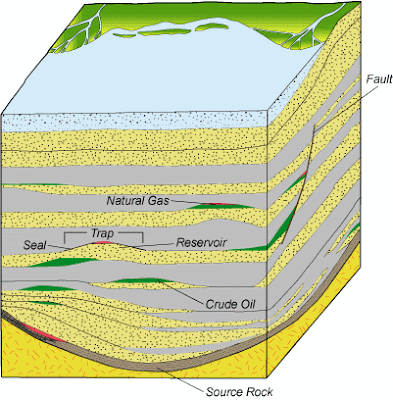 |
| Image Source: NYDailyNews.com |
Oil prices continued to advance Jan. 30, and natural gas prices rebound with a new front-month contract in the New York market among mixed economic indicators.
“Crude inched higher on recent momentum and European optimism despite the report of a large build in [US crude] inventories,” said analysts in the Houston office of Raymond James & Associates Inc. Energy stocks were mixed, with the Oil Service Index falling 0.8% but the SIG Oil Exploration & Production Index rising 0.2%.
“The oil market’s reaction to gross domestic product data was different from the likes of the markets for gold and the other precious metals, with participants appearing more concerned about the oil demand ramifications of a fragile US economy than what the data implied about the Federal Reserve System’s commitment to monetary accommodation,” said Marc Ground at Standard New York Securities Inc., the Standard Bank Group. “However, later in the day after the Federal Open Market Committee announcement, the market regained its composure, and bolstered by the prospect of continued quantitative easing, prices were pushed higher to close the day firmly in the black.”
At the close of a 2-day meeting, the FOMC said it will maintain its monthly $85 billion bond-buying stimulus plan, claiming the recent stall in the tepid US economy is likely temporary. Esther George, the first woman president and chief executive officer of the Kansas City Federal Reserve Bank, voted against that policy in her first ballot as one of four new members of the 12-member FOMC. Long-time observers reported no new committee member in decades had cast a dissenting first-time ballot. However, George expressed concern that “continued high level of monetary accommodation increased the risks of future economic and financial imbalances and, over time, could cause an increase in long-term inflation expectations,” the FOMC reported.
Since 2008, the Fed has held overnight interest rates near zero. Through its purchases of securities to force longer-term borrowing costs lower, it has tripled its balance sheet to $3 trillion. Yet the US economy remains week and unemployment high.
On Jan. 31, the dollar showed little reaction to an increase in US jobless claims as the euro weakened against it. The US Department of Labor reported first-time applications by US residents for unemployment benefits unexpectedly increased by 38,000 to a seasonally adjusted 368,000 in the week ended Jan. 26. Officials were expecting a drop in new applications following decreases in the previous 2 weeks to a 5-year low. More than 5.9 million US residents received benefits in the week ended Jan. 12, the latest data available, an increase of 250,000 from the previous report.
 |
| Image Source: YahooNews.com |
US inventories
The Energy Information Administration reported Jan. 31 the withdrawal of 194 bcf of natural gas from US underground storage in the week ended Jan. 25, less than the Wall Street consensus of a 204 bcf decrease. That left 2.8 tcf of working gas in storage, 202 bcf less than the comparable period in 2012 but 304 bcf above the 5-year average.
EIA earlier said commercial US crude inventories escalated 5.9 million bbl to 369.1 million bbl that same week, more than double Wall Street’s consensus for a 2.5 million bbl increase and surpassing the aggregate gain reported in the previous 3 weeks. However, gasoline stocks fell 1 million bbl to 232.3 million bbl last week, opposite analysts’ expectations of a 1 million bbl gain. That’s on top of a 1.7 million bbl decline in the week ended Jan. 18. Finished gasoline inventories increased last week while blending components decreased. Distillate fuel stocks fell 2.3 million bbl to 130.6 million bbl last week, surpassing the outlook for a 500,000 bbl decline.
The total increase in “Big Three” inventories of crude, gasoline, and distillates “was a bit smaller relative to consensus estimates,” Raymond James analysts said. “Other petroleum products increased sizably in aggregate, with a large build in unfinished oils. Refinery utilization also bounced back to 85% after three consecutive declines.”
Ground said, “Highlighting concerns over off-take from the Seaway Pipeline, Cushing, Okla., crude oil inventories rose 285,000 bbl: this was an added drag to the West Texas Intermediate price.”
 |
| Image Source: Google.Images.com |
Energy prices
The March contract for benchmark US sweet, light crudes increased 37¢ to $97.94/bbl Jan. 30 on the New York Mercantile Exchange. The April contract gained 39¢ to $98.38/bbl. On the US spot market, WTI at Cushing was up 37¢ to $97.94/bbl.
Heating oil for February delivery inched up 0.81¢ to $3.12/gal on NYMEX. Reformulated stock for oxygenate blending for the same month escalated 6.53¢ to $3.04/gal.
The new front-month March contract for natural gas regained 7.7¢ to $3.34/MMbtu on NYMEX. On the US spot market, gas at Henry Hub, La., took back 4.7¢ to $3.24/MMbtu.
In London, the March IPE contract for North Sea Brent rose 54¢ to $114.90/bbl. Gas oil for February was up $4.50 to $990.75/tonne.
The average price for the Organization of Petroleum Exporting Countries’ basket of 12 benchmark crudes advanced 91¢ to $111.43/bbl.
This Dr. Ali Ghalambor Facebook page shares the latest news on the oil and gas market.








.jpg)













.jpg)




















